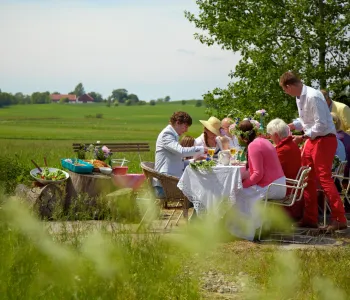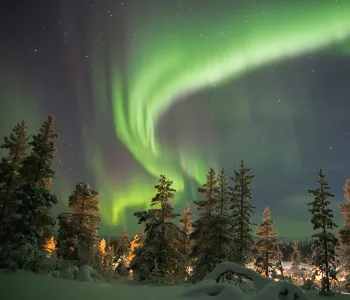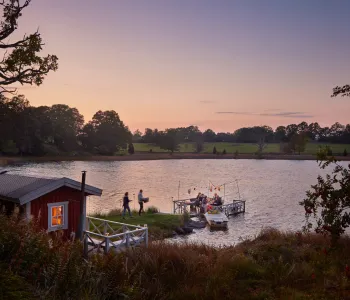
Swedish regions at a glance
Sweden is a long country and it differs a great deal from south to north. In all there are 25 different landscapes, so it is not easy to decide which part you want to explore. To help you find your desintination, we have divided the country into three geographic sections – south, central and north – in order to provide a clear picture in an inspiring manner of what Sweden has to offer.

South Sweden
South Sweden is the home of fertile agricultural landscapes with billowing canola fields and vast plains. Here, the geese fly in formations across the Skåne spring sky. Here, you can also follow Kurt Wallander as he hunts down murderers through the narrow cobbled alleys in Ystad, Sweden’s southernmost town.
In nearby Blekinge, salmon spawn in the brooks and streams, and every year in Västergötland thousands of cranes gather to dance together before flying north. A classic prawn sandwich at one of Gothenburg’s outdoor restaurants is part of the Swedish summer as is a boat tour among Bohuslän’s many islets, skerries and fishing villages.
Cycle along the beach through Halland or pedal an inspection trolley through Dalsland’s forests for a nature experience out of the ordinary. In this part of Sweden, you’ll find Astrid Lindgren’s home district among Småland’s red cottages and Öland’s bare limestone soils with windmills and ancient remains. Gotland, Sweden’s biggest island, is only a boat trip away with Visby’s medieval city wall, which is steeped in history, where the occasional knight may still make an appearance!


Central Sweden
Central Sweden is a land of forests, lakes and great nature experiences. And the step from a canoe trip in Värmland’s wilderness to the Swedish capital is not big. As a hint of its proximity to Stockholm and the Royal Palace, the whole of Mälardalen is full of country seats and beautiful castles.
As well as everything Sweden’s capital offers, a walk through Stieg Larsson’s millennium settings around Slussen, Mariatorget and Mosebacke is recommended, as is the Viking village of Birka on Björkö in Stockholm Archipelago. Take a guided tour through the area of ancient remains and see what the village looked like in the eighth century.
Dalarna has Sweden’s most traditional Midsummer celebrations, abounding with distinctive Dale-carlian painting on everything from Dala horses to clogs. And the old garrison town of Örebro offers perspectives on life as you enjoy a coffee in the water tower Svampens Topp. And if you have been caught up by the fishing trend, you can experience Östergötland’s fish-rich waters.
North sweden
Norrland is the land of northern lights and never-ending light. A hike on the mountains by the Arctic Circle where the midnight sun lights up the summer nights is a magical experience. In Lapland, Sweden’s biggest province and maybe Europe’s last wilderness, you can meet Samis tending their reindeer and enjoy the unspoilt nature in Sarek. In Torne River with its abundance of fish, you can watch the salmon spawn or fish for whitefish, salmon trout, pike or perch.
Take a historic step between Norway, Sweden and Finland at the same time in Treriksröset, Sweden’s northernmost point. Åre, a little further south, is a large alpine centre and the place for you if you like skiing. The unusual landscape of the High Coast in the County of Västernorrland on UNESCO’s World Heritage List offers a vertiginous nature experience.
Swedish people drink more coffee than anyone else in the world, probably because it’s so tasty. Why not take a couple of packets home from the hometown of the well-known coffee brand Gevalia? Gevalia means Gävle in Latin, and the coffee roasting factory is still located in the town whose fame has been based on coffee since 1920.





